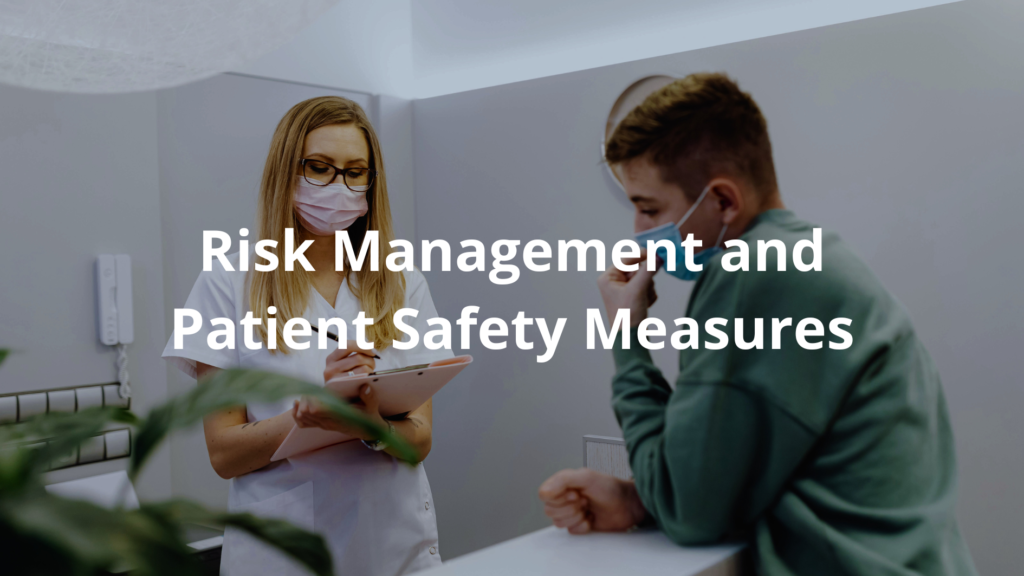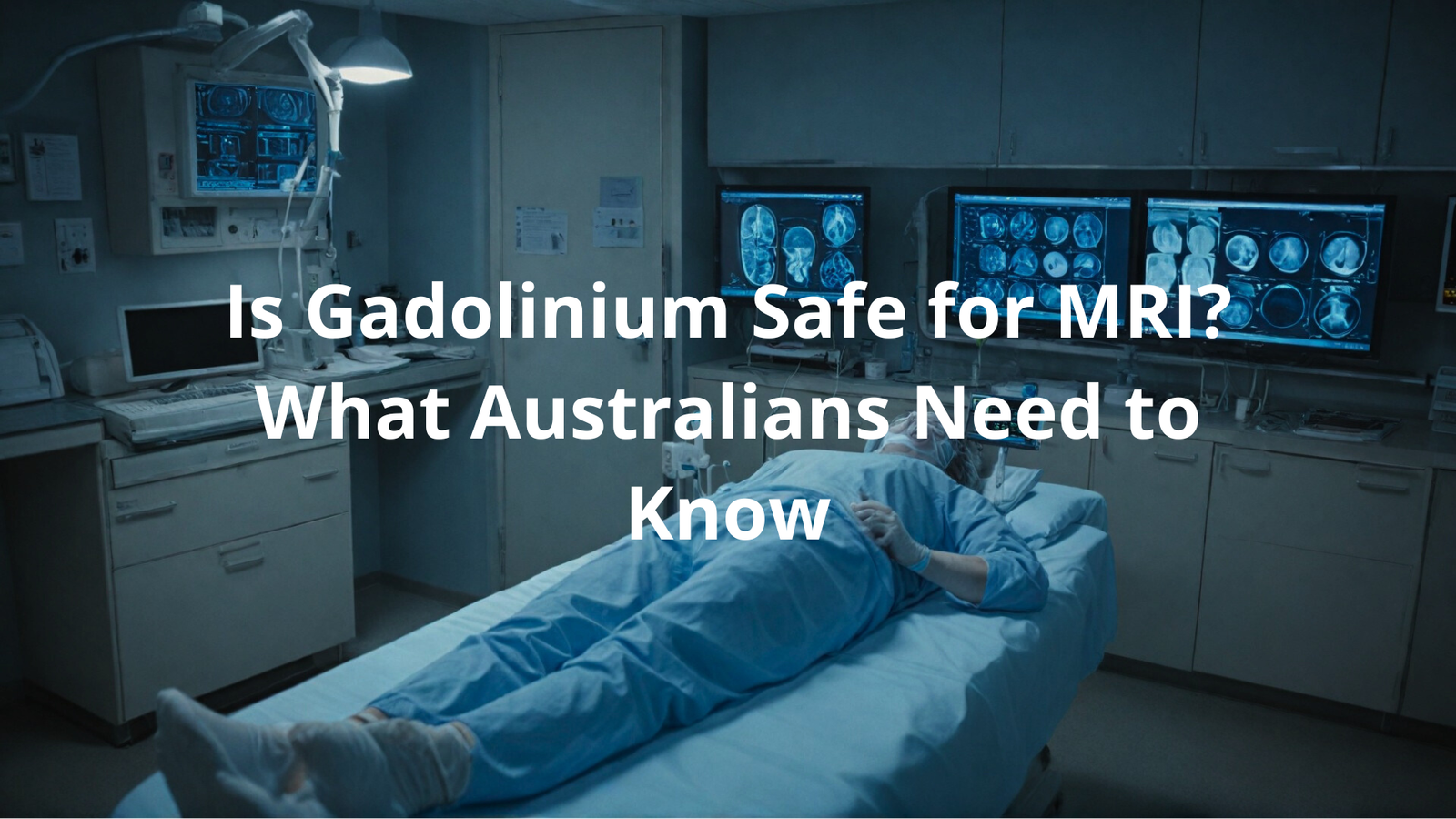Get clear, up-to-date insights on gadolinium safety, risks, and Australian regulations to make informed MRI decisions.
Gadolinium-based contrast agents (GBCAs) help make MRI images clearer, but some people worry about how long they stay in the body and if they cause health problems. In Australia, health experts, including the TGA, have strict rules to keep patients safe. However, some people—like those with kidney problems—may be at higher risk.
Knowing the different types of contrast agents, safety steps, and other imaging options can help you make better choices.
This article shares important facts, safety tips, and new research about gadolinium in Australia. It will help you feel confident when talking to your doctor about your MRI choices.
Key Takeaways
- Gadolinium retention is real, but risks vary. Some contrast agents stay in the body longer, especially in high-risk groups.
- Australia follows strict safety protocols. The TGA regulates usage, emphasizing safe administration and patient monitoring.
- Safer alternatives exist. For some cases, non-gadolinium imaging techniques may be a better option.
Gadolinium-Based Contrast Agents (GBCAs) in MRI
Gadolinium-based contrast agents (GBCAs) are important for medical imaging, especially in MRI scans. These contrast agents help doctors see blood vessels, tissues, and problems more clearly, making them very useful for diagnosing different health conditions. (1)
There are two main types of GBCAs:
- Linear agents have a looser structure, which makes it easier for gadolinium to stay in the body. Some of these agents have been restricted or removed from use due to safety concerns.
- Macrocyclic agents have a stronger, cage-like structure, making it less likely for gadolinium to stay in the body. They are considered safer and are generally preferred in clinical settings.
Even though they are helpful, people worry about gadolinium staying in the body for a long time. This has led to stricter rules and more careful checks.
Gadolinium Safety and Health Risks
Gadolinium is normally processed and excreted through the kidneys, but in some cases, it can linger in the body. This raises concerns about potential health risks, including:
- Gadolinium in the Brain: Studies show that tiny amounts of gadolinium can stay in the brain, but there is no proof it causes brain problems.
- Kidney Problems: People with weak kidneys may have trouble removing gadolinium from their bodies, which can be risky.
- Allergic Reactions: Some people may have allergies to GBCAs, though it is rare. Reactions can include skin rashes, trouble breathing, or severe allergic shock.
High-risk groups include patients with kidney disease, pregnant women, and children. For these people, doctors need to decide if using GBCAs is worth the possible risks.
Gadolinium Nephrogenic Systemic Fibrosis (NSF) and Other Complications
A serious problem that can happen with gadolinium is nephrogenic systemic fibrosis (NSF). This rare disease makes the skin, joints, and organs thick and hard, causing pain and trouble moving. (2)
Causes of NSF:
- Primarily affects patients with advanced kidney disease who cannot efficiently eliminate gadolinium.
- More commonly linked to linear GBCAs, which have higher retention rates.
- Symptoms may develop weeks or even months after gadolinium exposure, making diagnosis difficult.
Symptoms of NSF:
- Severe skin tightening and swelling, often starting in the limbs and spreading.
- Joint stiffness and reduced mobility, leading to difficulty in movement and daily activities.
- Muscle weakness and chronic pain, causing a significant decline in quality of life.
- In some cases, organ fibrosis can develop, affecting the heart, lungs, or liver.
Preventing NSF:
- Screen patients for kidney function before administering GBCAs, particularly those with chronic kidney disease.
- Prefer macrocyclic GBCAs, as they have lower retention rates and are considered safer.
- Avoid repeated contrast exposure unless absolutely necessary for diagnostic purposes.
- Hydration before and after the scan may help flush out the contrast agent more effectively.
NSF is rare, but knowing about it and taking steps to prevent it is important for keeping patients safe. Better testing and using safer contrast agents have helped lower the number of NSF cases in recent years.
Australian Regulations on Gadolinium Safety
The Therapeutic Goods Administration (TGA) in Australia checks and controls GBCAs to make sure they are safe to use. Some key guidelines include: (3)
- Use only when medically necessary: MRI scans should be justified, and contrast should be used only when it significantly improves diagnostic accuracy.
- Lowest effective dose: Minimizing the amount of gadolinium administered reduces potential risks.
- Preference for safer agents: Macrocyclic GBCAs are recommended over linear agents due to their lower retention rates.
Australia’s rules for GBCAs follow the same high safety standards as the U.S. FDA and the European Medicines Agency (EMA). Patients must give permission and be informed about any risks before having a contrast-enhanced MRI scan.
Risk Management and Patient Safety Measures

Ensuring patient safety is a top priority when using GBCAs. Several best practices help minimize potential risks:
Pre-Scan Screening
- Assess kidney function, especially in patients with chronic kidney disease
- Review prior gadolinium exposure to reduce unnecessary accumulation
- Discuss alternative imaging methods when suitable
Administration Protocols
- Use the lowest possible dose for diagnostic effectiveness
- Prefer macrocyclic agents over linear ones to reduce retention risks
- Observe patients for immediate allergic reactions, including rash, nausea, or breathing difficulties
Post-Scan Monitoring
- Encourage hydration to help flush out residual gadolinium through urine
- Watch for delayed hypersensitivity reactions, which can appear hours or days later
- Ensure any adverse events are reported to health authorities for tracking and safety improvements
By taking these steps, doctors can make MRI scans safer while still getting clear and useful results.
Gadolinium Alternatives and Safer Imaging Options
For patients who may be at risk, there are alternative imaging options available:
- Contrast-Free MRI: Advanced imaging techniques allow high-resolution scans without contrast agents.
- Non-Gadolinium Contrast Agents: Some newer compounds are being researched as safer alternatives.
- Ultrasound and CT Scans: In some cases, other imaging methods can be used instead of an MRI, depending on what the doctor needs to check.
Research and Emerging Trends in Gadolinium Safety
Ongoing research aims to improve the safety of contrast agents. Areas of focus include:
- Developing contrast agents that break down more efficiently in the body
- Studying long-term effects of gadolinium retention
- Exploring alternative imaging techniques that eliminate the need for contrast agents
These advancements could significantly reduce the risks associated with gadolinium exposure while maintaining high diagnostic accuracy.
Patient Awareness and Public Health Initiatives
Patients play a crucial role in their own healthcare decisions. Public health initiatives in Australia focus on:
- Educating patients on gadolinium risks and safety measures
- Encouraging informed consent before MRI scans
- Promoting safe imaging practices among healthcare providers
By learning and speaking up about safer imaging, patients can work with doctors to make the best choices for their health.
FAQ
What is Gadolinium and why is it used in medical imaging?
Gadolinium is a contrast agent used in MRI scans to help doctors see internal body structures more clearly. It helps doctors see certain tissues better and makes it easier to find health problems by improving the image quality.
Are there known safety concerns with Gadolinium in Australia?
Some patients have reported potential long-term effects from Gadolinium-based contrast agents. Australian medical authorities recommend careful patient screening and using the lowest effective dose. Most patients experience no significant adverse reactions during or after imaging procedures.
How do Australian health regulators manage Gadolinium safety?
The Therapeutic Goods Administration (TGA) monitors Gadolinium-based contrast agents closely. They assess potential risks, review international research, and provide guidelines to healthcare providers to minimize patient exposure and ensure safe diagnostic imaging practices.
Who might be at higher risk when receiving Gadolinium contrast?
Some people need extra care before getting a Gadolinium scan. If you have kidney issues, need lots of special scans, or have certain health conditions, your doctor might want to take extra steps to keep you safe.
What symptoms should patients watch for after a Gadolinium-enhanced MRI?
Keep an eye out for anything weird after your scan. This could mean skin looking different, your joints feeling sore, or feeling strange in ways that don’t seem normal. If something feels off, tell a grown-up or doctor right away.
Can Gadolinium be completely removed from the body?
Healthy kidneys typically filter and eliminate Gadolinium efficiently. However, some studies suggest trace amounts might remain in body tissues. Drinking plenty of water and following your doctor’s advice can help your body remove gadolinium naturally.
Are there alternative imaging techniques without Gadolinium?
Some imaging techniques like non-contrast MRI, ultrasound, or CT scans might be alternatives. The best approach depends on your specific medical condition. Always consult your doctor to determine the most appropriate diagnostic method.
How can patients minimize potential Gadolinium-related risks?
Here’s how to stay safe: talk honestly with your doctor about your health, get any needed tests, drink plenty of water, and follow medical advice. Pick a good medical center that knows how to do scans carefully
Conclusion
The conversation around gadolinium safety is evolving, but one thing is clear—caution and awareness matter. While GBCAs remain essential in MRI diagnostics, their use must be carefully managed to reduce risks. Groups like the TGA keep improving safety rules, and doctors are using safer methods.
For patients, knowledge is power. Asking questions, discussing alternatives, and staying informed can lead to better health decisions. As research progresses, the goal remains the same: to balance diagnostic accuracy with patient safety. MRI technology keeps advancing, and so does our understanding of how to use it responsibly.
Related Articles
- https://radiologyscan.com.au/contrast-mri/
- https://radiologyscan.com.au/contrast-material-safety/
- https://radiologyscan.com.au/contrast-material-reactions/
References
- https://www.tga.gov.au/news/safety-alerts/gadolinium-based-contrast-agents-mri-scans
- https://pmc.ncbi.nlm.nih.gov/articles/PMC8378745/
- https://www.msaustralia.org.au/news/use-gadolinium-mri-scans-ms/




